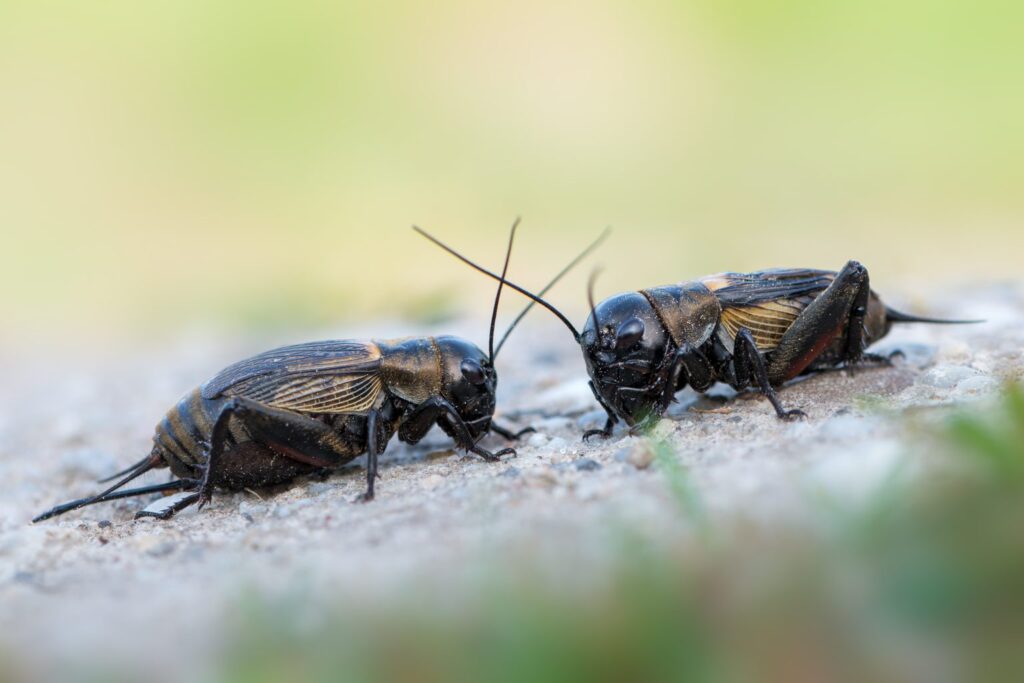The end of summer marks the end of the egg-laying season for field crickets and the time when they try to find their way indoors. Crickets are usually black in color, but some can have a brown-ish tinge to them, have six legs, antenna and range in size from half an inch to an inch and a half.
These nocturnal insects usually hide in the dark and under vegetation during the day but enjoy coming out as the sun sets, and gracing us with their lovely chirping noises.
Lifecycle
Female crickets can lay anywhere from 700-3,000 eggs during their lifetime. Starting around eight to 10 days old, female crickets will start laying approximately 100 eggs every one to three days. The eggs are generally laid in soil, where the newborns will climb to the surface after hatching. It takes two to three months for a cricket to become a full adult.
Crickets are most common in the late spring, through the summer and into the early/mid-fall. While they usually start to go away towards the end of summer, their numbers have been known to increase after long dry periods followed by heavy rain.
Damage
Although the noise from crickets can be loud, and annoying to some, it may come as a surprise that crickets can do a fair amount of damage if they find their way indoors. Wallpaper, fabric, wood, plastic, rubber and leather are all materials crickets will chew on or through. As with other pests, it’s important to seal holes and gaps around the house or structure to reduce or eliminate entry points for insects during cooler, wet months.
Control
Because crickets spend most of their time in dark, cool, damp areas, an easy way to reduce their presence is to remove any piles of wood, brick, stone or other lawn debris from around the house. Extensive weeds and heavy plants can also harbor crickets. Although they are nocturnal, they are attracted to light, so reducing outdoor lights that are constantly on, can also help detract crickets from the property.
If there appears to be a constant cricket problem, it would be a good idea to call the professionals for advice. The team at United Pest and Turf Control is trained and licensed to manage indoor and outdoor pests.
All about the Field Cricket in North Alabama and Southern Tennessee
Serving North Central Alabama and South Central Tennessee
Limestone County
Ardmore
Home » All about the Field Cricket


